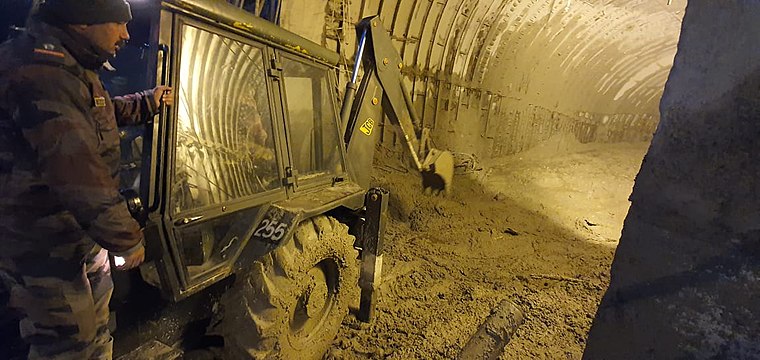On the 7th of February 2021, the Uttarakhand flood began in the environs of the Nanda Devi National Park, which is also considered to be a UNESCO World Heritage Site in Uttarakhand state, India. The actual cause is believed to be a landslide, an avalanche, or a glacial lake outburst flood. According to some reports, the flood may have been caused by climate change and global warming resulting in the Nanda Devi glacier breaking off, releasing the trapped water behind the ice, and finally causing a glacial lake outburst flood. Some other reports comprising of satellite images suggest that the flood was a result of a glacial burst causing a landslide.
As per the current information available, the number of laborers working at a power project in Tapovan-Reni missing is counted to be over 150, meanwhile, the rescue team has managed to recover 10 bodies so far. Power Project and home along the way have completely been washed off and swept away by the raging torrent. Indo-Tibetan Border Police (IBTF) personnel has managed to rescue 16 people who were trapped in a tunnel near the Tapovan area.

What is Glacial Lake Outburst Flood (GLOF)?
As per Wikipedia, a glacial lake outburst flood (GLOF) is a type of outburst flood caused by the failure of a dam containing a glacial lake.
The Glacial Outburst Flood (GLOF) has three main features:
- Involvement of sudden ( in some cases cyclic) releases of water.
- Usually rapid events, sometimes lasting hours to days.
- Results in large downstream river discharges (often increase by an order of magnitude).
Nanda Devi Glacier
The Nanda Devi glacier forms a part of the Nanda Devi which is the second-highest mountain after Kangchenjunga in India and ranked the 23rd-highest peak in the world. While on paper it is the second-highest after Kanchenjunga, it can be considered the highest mountain located entirely within the country as Kachenjuna mostly lies on the border of India and Nepal. The Uttar Nanda Devi Glacier lies on the northern side of the Nanda Devi and flows into the Uttar Rishi Glacier. Similarly, the Dakkhini Nanda Devi Glacier lies to the southwest and flows into the Dakkhini Rishi Glacier. Furthermore, these glaciers drain west into the Rishiganga.
Cause of the Glacier Burst
The actual cause of the Glacier Burst is still not determined but various reports suggest that it is believed to be a landslide, an avalanche, or a glacial lake outburst flood. A buildup in water pressure and seismic activity can cause glaciers to burst, but another possible cause might be climate change due to global warming, according to the reports from Associated Press. Global warming causes the world average temperature to rise, resulting in higher temperatures coupled with less snowfall can further accelerate melting, which causes water to rise to potentially dangerous levels.
“Most mountain glaciers around the world were much larger in the past and have been melting and shrinking dramatically due to climate change and global warming,” Associated Press quoted Sarah Das, an associate scientist at Woods Hole Oceanographic Institute as saying.

